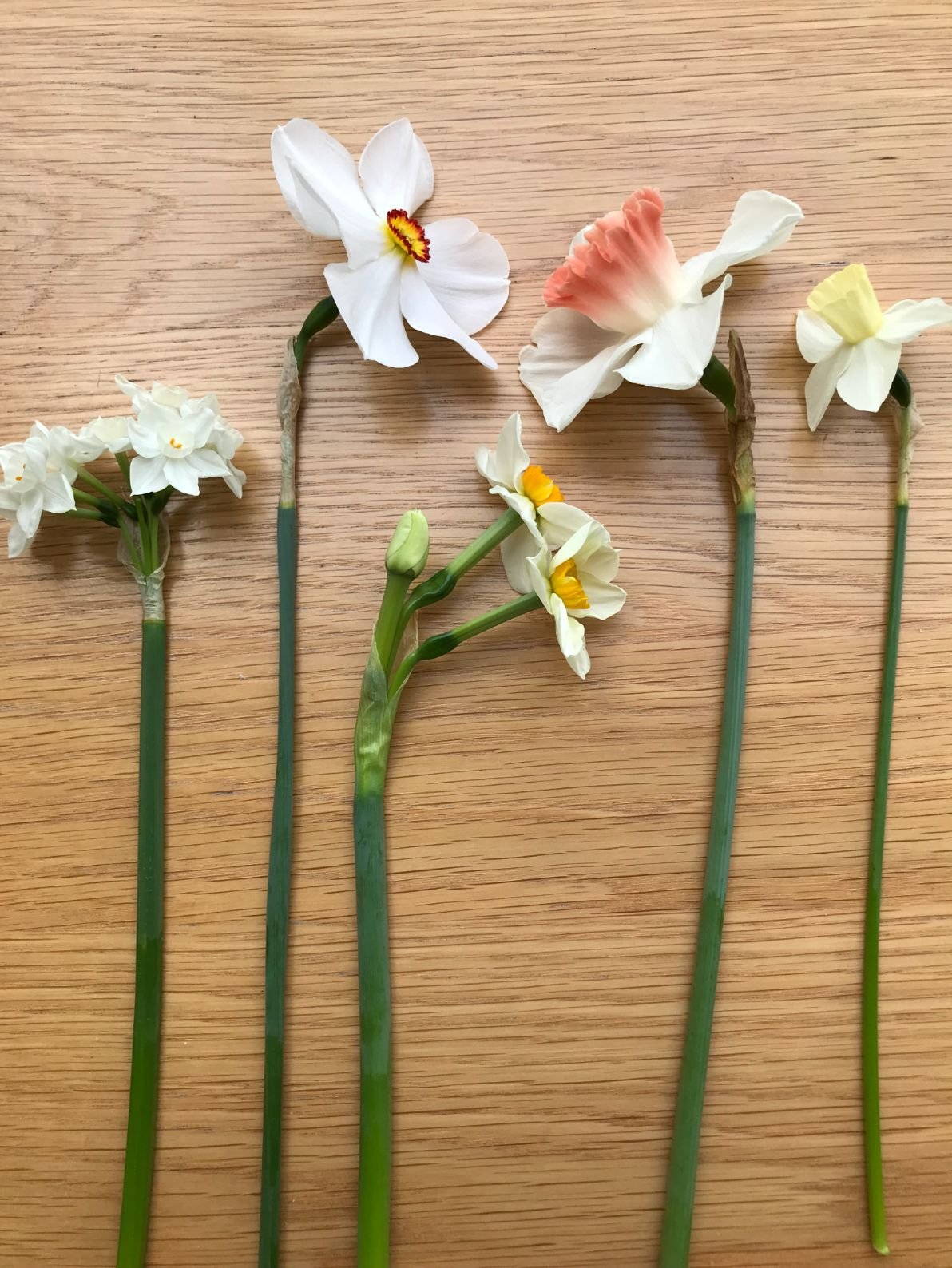Focus of the Month - SUSTAINABILTY
Spring is here!
What has been happening at the Patch in March?
After a dry and unseasonably warm February, we have already had snow in March and lots of rain. I think our gardens did need the rain but perhaps not quite as much as we have had!
I am still continuing to clear and mulch at the Patch. Shrubs are budding up and I expect to have spirea blossom soon. Although I have narcissi in my garden, the scented narcissi that I grow for sale are not quite ready yet. I think the long cold spell we had in December may have slowed some of the flowers down this year. I have been able to pick blossom from plum trees and my first anemones. I will be posting on social media when they my flowers are ready for sale. If you would like to be first in line, do get in touch!
I am continuing to sow seeds. Perennials have been sown using a new method for me – sprinkling on damp kitchen paper and putting in ziplock bags (which I will reuse) to germinate. I then put the germinated seeds into modules to grow on. I am hoping to successfully grow the following perennials which are all first-year flowering and so should give me flowers to cut later in the year: Achillea Summer Berries and Summer Pastels, Briza media, Bronze Fennel, Catananche, Centranthus, Gaura, Linaria, Ox-Eye Daisy (which is recommended for direct sowing but I have had no luck so trying this way, perennial Limonium (known as Sea Statice), Silene and Verbena bonariensis. I have also sown three Rudbeckias – Prairie Glow, Prairie Sun (the seeds are a fantastic green colour) and Sahara. Only the Prairie Glow is likely to be truly perennial in the temperatures we have in the UK over winter but I sowed them all at the same time.
I am also sowing hardy annuals. Although these are often sown in spring as well as in autumn, I am having to sow more now than I normally would as a lot of those I sowed in autumn did not survive the winter given the very low temperatures we had over a prolonged period in December.
The sweet peas I sowed at the beginning of the month germinated well and are now out in the greenhouse to grow on in their pots. As with autumn sown annuals, almost all my autumn sown sweet peas did not make it through the winter. I will be planting out the few I have now that the weather has warmed up. Hopefully the spring sown ones will catch up.
I ordered some perennial plants from a British nursery in autumn. These have been overwintering in my greenhouse but I will plant them out by the end of the month to make way for the dahlias to be potted up at the beginning of April. These will need to be kept in the greenhouse until after the last frosts.
Sustainability
Last month I wrote about the different bulbs you can plant to give flowers each month of the year. This month I want to focus on “sustainability” of growing flowers. It could be said that flowers are a luxury and the most sustainable thing to do would be to not grow cut flowers at all. That would be taking a rather extreme approach and would ignore the joy and happiness that flowers bring to many people.
Sustainability is one of those words with different meanings to different people and is sometimes used by businesses that many would consider not to be sustainable at all.
The dictionary definition is two fold. First – the ability to be maintained at a certain rate or level, and second – avoidance of the depletion of natural resources in order to maintain an ecological balance.
The United Nations defined sustainability in 1987 as “meeting the needs of the present without compromising the ability of future generations to meet their own needs”. There is often a tension between the “developed” and the “developing” world in this area which this definition tackles. The UK has produced 17 Sustainable Development Goals to form a framework for improving the lives of populations around the world and mitigation the hazardous man-made effects of climate change. You can read more about the Goals at https://www.un.org/sustainabledevelopment/sustainable-development-goals/.
I think Goals 12 and 15 are the most applicable to growing flowers, but they are not the only relevant goals. Goal 12 is about responsible consumption and production and Goal 15 is titled Life on Land and is about conserving life on land by protecting and restoring terrestrial ecosystems, sustainably manage forests, combat desertification and halt and reverse land degradation and stop biodiversity loss.
Most flower farmers in the UK are small scale and most grow using natural methods such as not using chemicals or compost containing peat. There are not many who are organically-certified because of the costs of going through such a process. Some do not grow using artificial heat to reduce energy consumption.
what can growers do?
Use natural fertilisers such as seaweed – or better still let a patch of nettles and comfrey grow to create (very strong smelling!) fertiliser.
Use compost produced yourself or peat-free.
If you buy in plants, bulbs or flowers, ask where and how they have been grown. For example, many bulb suppliers use neonicotinoids when producing bulbs. These are insecticides used to kill a variety of insects such as aphids. They are absorbed by the whole plant and transported to all of the plant including its pollen and nectar. This affects bees and other pollinators as well as worms in the soil, birds who eat the seeds and aquatic life from run off into rivers.
Try to buy plants that have been grown as locally as possible. There are lots of UK nurseries growing shrubs and perennials if you do not grow these from seed yourself.
Save your own seed. These often produce better plants than bought seed and are very fresh leading to good germination rates.
Ask questions of all your suppliers if not clear from their websites, for example - do you use recyclable packaging? Where do your products come from? How are they grown?
Reduce mains water use by using water butts or other rain water saving systems. Grow plants that do not require considerable watering.
What can buyers do?
Ask where the flowers you buy have been grown. Buy local if you can to reduce impact of long distance delivery.
Ask whether chemicals have been used to grow them.
Ask whether the compost is peat-free.
Use florists or flower farmers who do not use plastic wrapping.
Bouquet wrapped in Kraft paper. No plastic in sight!
I would love to hear your views on sustainability and in particular in flower growing and buying. Please get in touch on social media, at sarah@sarahsflowerpatch.co.uk, or 0773-801-6063.
I will be returning to this subject in other journals during the year.
Birth flowers of the month
It is no surprise that March’s flower is the daffodil. Of course, daffodils are the national flower of Wales and it was traditionally thought that those who see the first daffodil of the season will be blessed with wealth in the coming year! I saw my first daffodils near Westminster in London on 9 February which I was not expecting but it is often a few degrees warmer in large cities.
Selection of daffodils
In my garden, the first daffodils to bloom are the small multi headed Tete-a-tete which I love. They are so reliable and bring joy to March. Different varieties will be in bloom throughout March and April.
Yellow is of course the traditional colour of daffodils. Because of this, spring is often associated with yellow. Other yellow spring bloomers are forsythia, mimosa (Acacia), yellow crocus, winter aconite (Eranthis hyemalis) and Mahonia. Although yellow isn’t my favourite colour for most of the year it brings a such a brightness to March after winter where there is little colour to be found.
Daffodils have inspired poetry, the most often quoted is probably Wordsworth: “I wandered lonely as a cloud, That floats on high o’er vales and hills, When all at once I saw a crowd, A host, of golden daffodils; Beside the lake, beneath the trees, Fluttering and dancing in the breeze.”
And this is a lovely quote from AA Milne’s When We Were Very Young – “She turned to the sunlight, And shook her yellow head, And whispered to her neighbour, “Winter is dead”.





